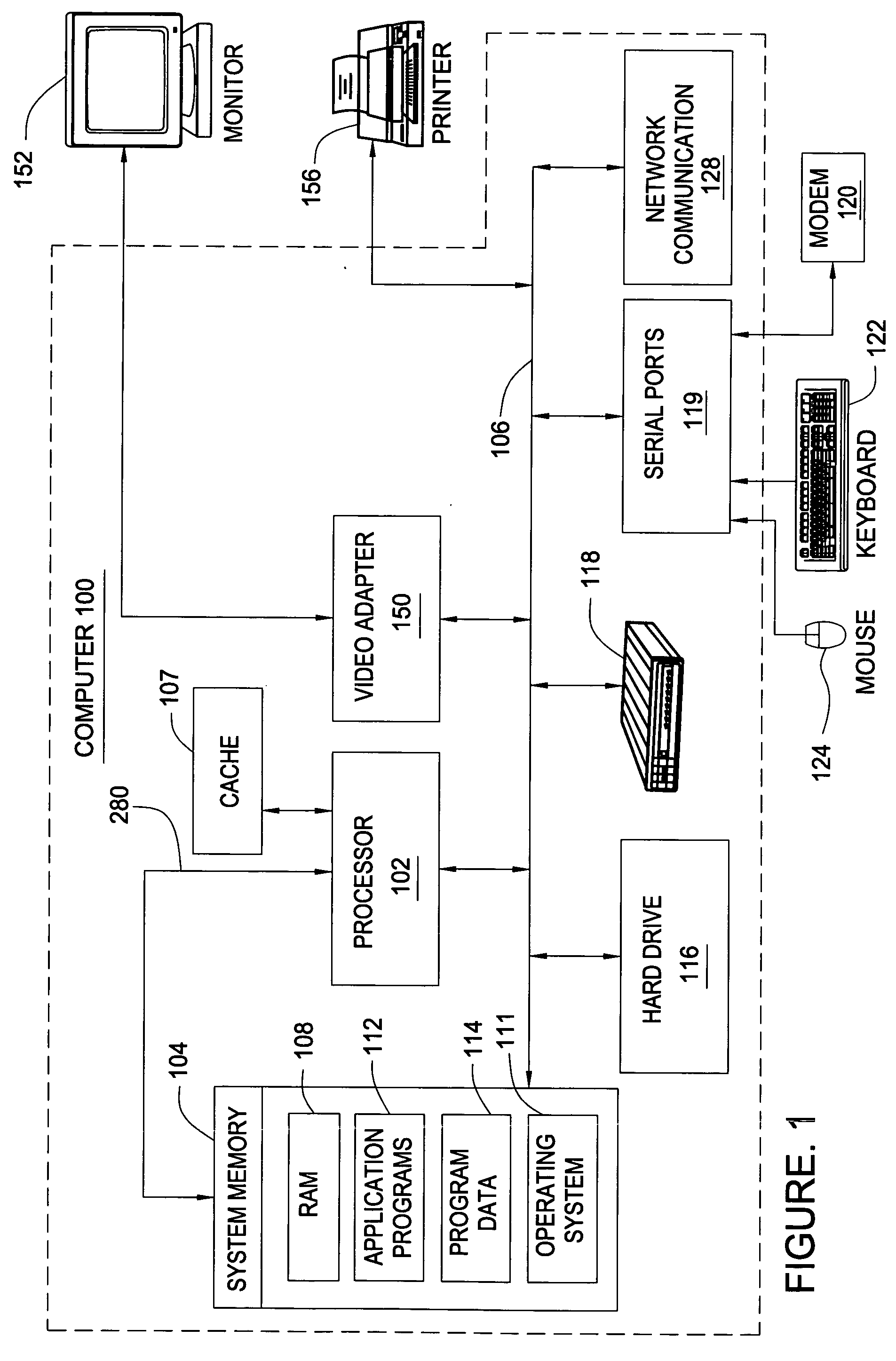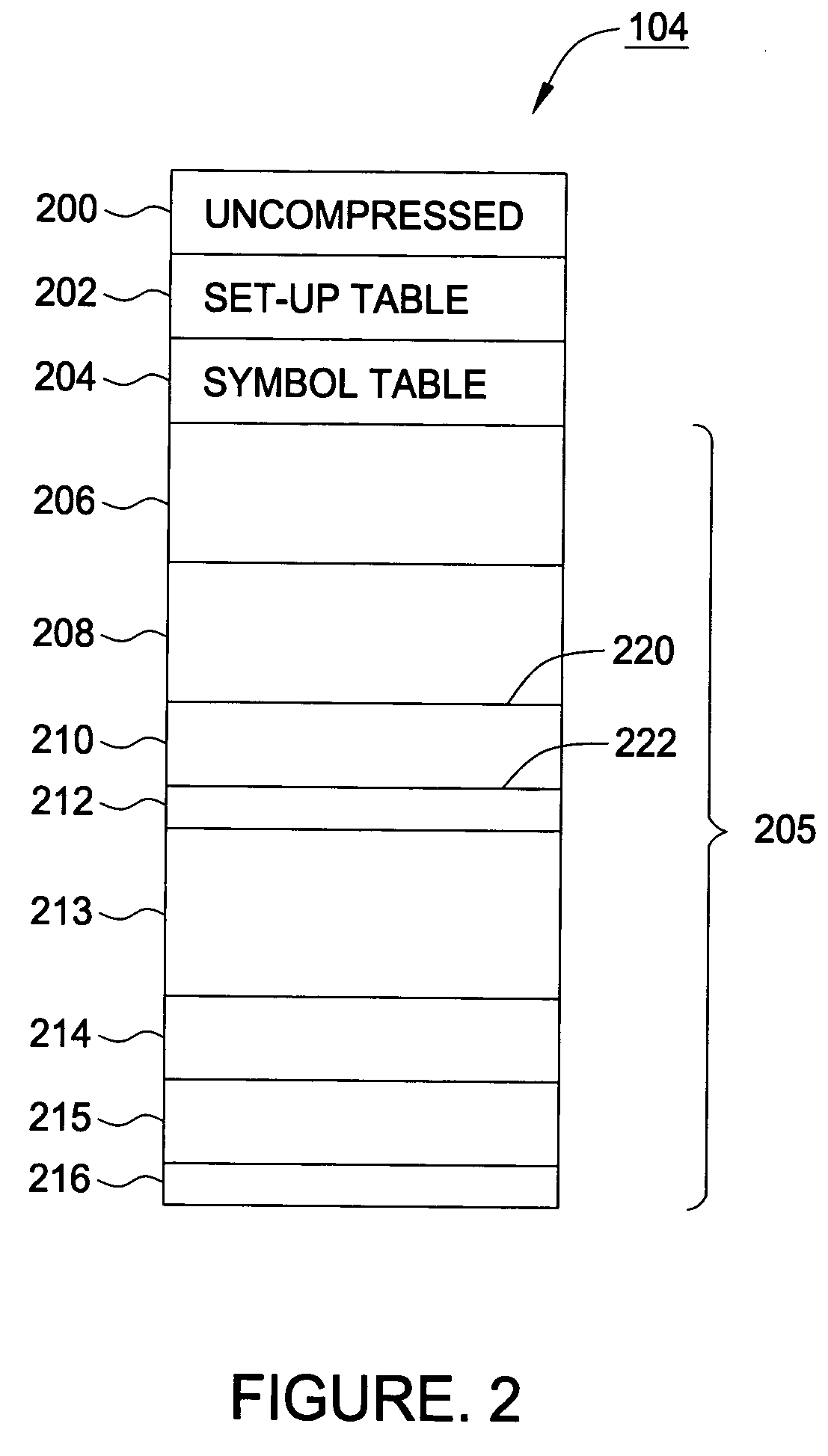Adaptive memory compression
a memory compression and memory technology, applied in the field of computer memory architectures, can solve the problems of high performance computing, high memory consumption, and high memory consumption, and achieve the effect of increasing the data block
- Summary
- Abstract
- Description
- Claims
- Application Information
AI Technical Summary
Benefits of technology
Problems solved by technology
Method used
Image
Examples
Embodiment Construction
[0027] The present invention provides for a memory architecture in which frequently accessed data is stored in an uncompressed format in a high speed cache to reduce latency. When the data is not being accessed, it is compressed and stored in a main memory store (system memory). In an effort to maintain an expected level of compression, one or more compression parameters are adapted based on a dynamic compression ratio generated from one or more actual achieved compression ratios. For some embodiments, the dynamic compression ratio may be monitored in hardware and, if it falls below a specified threshold level, the hardware generates a trap to software, allowing the software to intelligently modify compression parameters based on system parameters, such as currently running tasks, the amount of available memory remaining, and the like.
[0028]FIG. 1 illustrates a computer 100 that incorporates the principles of the present invention. The computer 100 may represent a wide variety of c...
PUM
 Login to View More
Login to View More Abstract
Description
Claims
Application Information
 Login to View More
Login to View More - R&D
- Intellectual Property
- Life Sciences
- Materials
- Tech Scout
- Unparalleled Data Quality
- Higher Quality Content
- 60% Fewer Hallucinations
Browse by: Latest US Patents, China's latest patents, Technical Efficacy Thesaurus, Application Domain, Technology Topic, Popular Technical Reports.
© 2025 PatSnap. All rights reserved.Legal|Privacy policy|Modern Slavery Act Transparency Statement|Sitemap|About US| Contact US: help@patsnap.com



